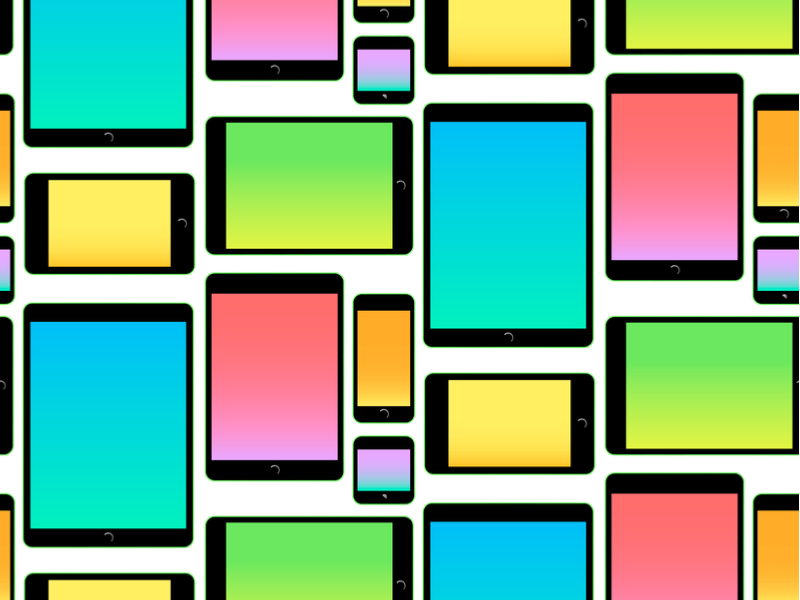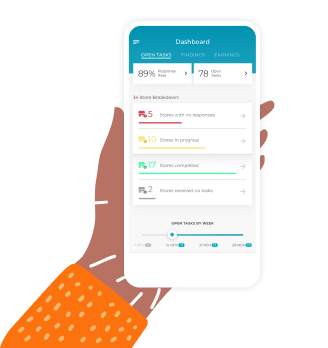Engaged, inspired employees can make all the difference in the brick-and-mortar environment. But there’s a twist on that road to employee motivation. Creating the right employee experience may well include arming associates with mobile devices to keep pace with their ever more knowledgeable customers. It wasn’t that long ago that mobile devices were considered anything but a tool for employee motivation. Today, however, mobile tech is increasingly being used to help identify customers, train associates, manage tasks, receive payments, and more—and some retailers even allow workers to use their own devices, connecting through a strategic mobile engagement platform. Read on to learn how retailers are fostering employee motivation through smartphone tech.
Mobile POS
Leading beauty retailer Sephora arrived at the party early as an adopter of the mobile point of sale system. By the start of 2012, Sephora had already deployed software from Agilysys and RedIron on Apple iPod touch devices in a large number of its U.S. stores. The iPod touch devices allowed for closer and more personal interaction with the sales associates, in addition to faster, more convenient checkout. In Sephora’s flagship store in New York’s Meatpacking District, the mobile POS replaced traditional checkout stations altogether; in other locations, it supplemented existing stations.
Mobile POS has continued to expand across the retail landscape; in addition to saving customers time and effort, associates of a variety of retailers are now able to provide a more seamless experience. That means, for example, being able to search availability of sizes and look for inventory in other stores, as well as having the customer’s purchase history, preferences, and more at hand. Associate empowerment can absolutely help increase employee motivation.
Beyond Mobile BI
Fashionable footwear and accessory retailer The ALDO Group stepped up its retail analytics efforts in recent years with an investment in a mobile visual business intelligence (BI) and reporting tool. Keeping up with sales, customer, and traffic data from more than 2,000 stores across 95 countries was proving unwieldy; BI, however, helped save significant time by replacing PDF reports. With the mobile component, it also provided near real-time data from anywhere, improving the speed to decision making.
There’s no doubt that BI tools can be beneficial, and CB4’s solution, accessible via mobile or desktop app, works hand-in-hand with such applications—or alone—to take things to the next level. The difference between BI and CB4 is in the extent of precision (here’s an in-depth comparison if you’re ready to learn more). CB4, for example, provides actionable recommendations with expected revenue lifts; uncovers store-level operational issues and guides the store manager in resolving them; measures and tracks store manager responses; and more.
Information from CB4 is accurately targeted at specific SKUs and stores—with SKU accuracy of up to 75%. Compared to BI, CB4 is less susceptible to sending false positives because of the machine learning aspect. In other words, as CB4 takes in more feedback about your business, its recommendations become even more accurate. More “hits” mean your employees are more likely to trust and continue to use CB4. In a recent survey 79.4% of store users approve CB4. Learn more about how we improve in-store execution and empower employees.
Next-level Mobile Enablement
According to Walmart, smartphones may be just the key to smarter work. Last October, the world’s largest company rolled out Bring Your Own Device (BYOD), an effort to help associates stay connected “from the familiar turf of their own smartphones.” The idea, according to the company blog, is to increase employee productivity—and, no doubt, employee motivation—through the use of its custom apps. Associates still can choose to check out a handheld device to access the store’s digital network, or they can download it onto their own—and receive a discount on their monthly phone bills along the way.
How many other retailers will follow suit is anyone’s guess, though many do keep an eye on the behemoth company’s tactics and successes. Walmart did address the issue of privacy right away in terms of the phones, being upfront about what the company would/would not be able to access on individual associates’ devices. Some information is helpful in making the program more useful for associates, the company states; it can view, for example, corporate email and data, device make and model, operating system version, and carrier, among other things. But Walmart can’t access personal emails, photos, videos, voicemails, texts, web activity, location, or list of apps.
The Bottom Line on Mobile Devices in Brick-and-Mortar
As a customer, it might still be challenging to see an employee staring at a mobile device rather than making eye contact. As more and more retailers empower those employees to use mobile in ways that tangibly enhances the customer experience, however, employee motivation will be a natural—and welcome—result.
An effective mobile engagement platform, after all, can help retail employees feel like they have a voice with peers and management. According to an article in Retail IT Insights, it can provide a way to share achievements; create positive internal competition through messaging; provide training for ongoing development; and provide instant access to information exactly where it’s needed. In short, these solutions work because they help create an “emotional connection.”
And that connection is where engagement resides.
Store managers use CB4 to get alerts about costly, persistent execution problems in their stores. Our easy-to-use mobile or desktop app helps users report on progress toward goals, review tasks accomplished, and see how their actions contribute to revenue. Learn more today.
Related:
How CB4 Retailers Use Tech to Enhance Store Manager Performance
How In-Store Technology Empowers Retail Operations Teams
How CB4 Improves Communication in Retail Between Corporate & Store Teams


